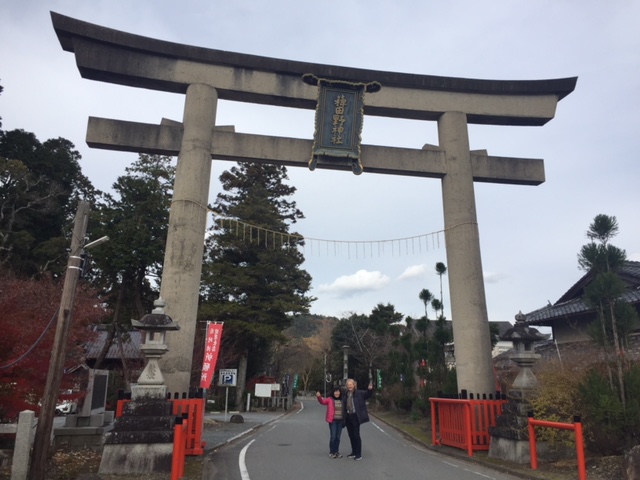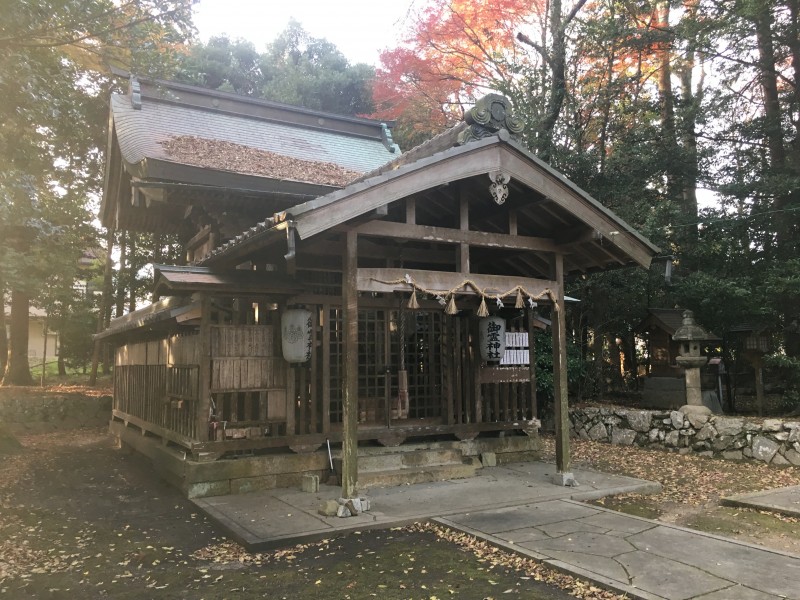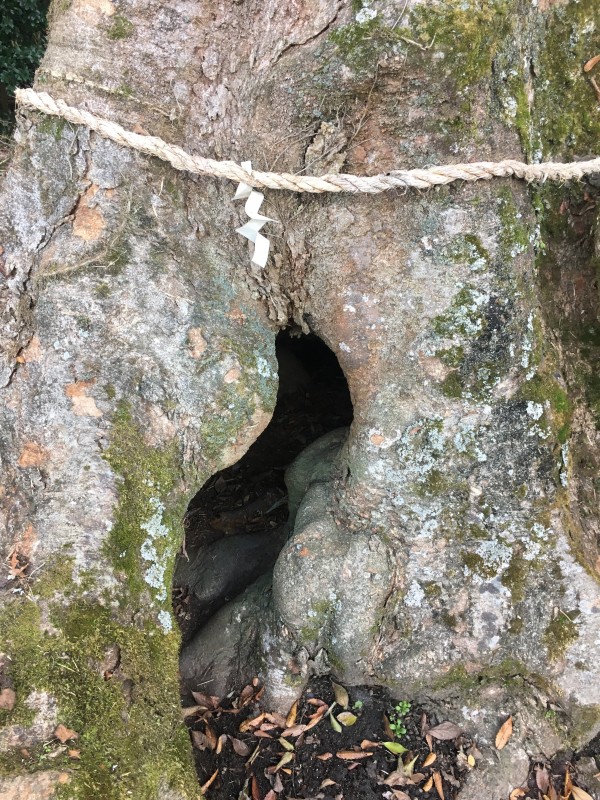
Larger than life entrance torii
A shrine that dates back to 709. A huge imposing torii. And next to it an ancient sake factory, now a museum, in front of which tourist coaches pull up throughout the day.
It’s only half an hour from Kyoto, in the town of Kameoka, so you might imagine that Hiedano Jinja would be better known. Apart from the torii, one has the feel the shrine has seen better days, yet it’s not without interest or character as I found out on a recent visit.

The shrine compound is compact and surrounded by a sacred grove.

Shrine buildings, surprisingly small compared to the torii, have a certain rustic charm

Explanations of how to bow are in Japanese, English,. Korean and Chinese. The Japanese is necessary nowadays because young people are often ignorant of the traditional manner.

Shakuhachi maestro, Preston Houser, looks through the stone ring. If you pass through with pure heart and focussed intention, your wish will come true. Perhaps he was wishing well for his next performance…

This iwakura (sacred rock) had most eye-catching pattern and colours, perhaps the reason why it was selected for special attention. It’s said to have a special power (‘Desire for Victory’ is its name), and placing both hands on it to absorb its energy while wishing will enable you to achieve your aim.

Some of the trees in the sacred grove are breathtaking in the way their narrow trunks soar upwards to improbable heights.

The shrine pond is said to have been used in the past by villagers for misogi (cold water purification) to ensure a good harvest. Still today some cup water in their hands as a symbolic gesture.

in the surrounding copse are shrines that speak of human immersion in nature.

The ornate guardian komainu display a fine pair of teeth and protruding red tongue.

There are various reasons why certain trees are singled out for sanctity and others not. With this one it is not hard to guess the reason why.

Leave a Reply